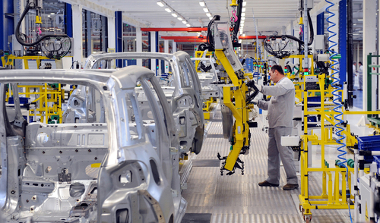O Secondary Sector of the economy is responsible for transforming goods and raw materials from the primary sector into goods, which are transferred to commercialization in the tertiary sector. Thus, the secondary sector corresponds to factory production, with various types of industries that are structured in different areas and aspects of the market.
When the secondary sector starts to grow and become more dynamic in a given place, we say that the industrialization process is taking place, that is, the mechanized or manufactured production of goods.
Industrialization took place in different ways around the world: developed countries were the first to go through this process, notably England, considered the heart of the I Industrial Revolution throughout the century XVIII. This country, in addition to France, the United States, among many others, is called classic industrialization country. In territories where development took place through the implantation of socialism or state capitalism, there was a planned industrialization, with most industries belonging to the government.
In emerging and underdeveloped countries, such as Brazil, the late industrialization, characterized by its consolidation only in the second half of the 20th century, with the predominant installation of foreign companies, also called multinationals.
Industrial activity is one of the most relevant in the production process of geographic space. This is because, in addition to boosting the economy, it expands, at least initially, the generation of jobs and is responsible for the rapid growth of cities. In Brazil, as industrialization occurred first in the Southeast region, due to inheritances structural structures inherited from the coffee economy, this region is the one that concentrates most of the income and population of the country.
There are three types of industries, categorized according to their production specialization:
a) Extractive industries: are those that operate from plant or mineral extraction, either with direct removal or with the transformation of extractive goods, such as oil, wood, among others.
b) Basic industries: are responsible for the production of machinery used to structure other industries and also have the function of produce materials that are not directly intended for consumption, but that are used again for other productions. industrial. Example: steel production.
c) Consumer goods industries: are responsible for the production or assembly of goods in their final phase, which will be directly directed to the tertiary sector. It is segmented into durable goods (non-perishable goods) and non-durable goods (perishable goods) industry.
The secondary sector of the economy, initially, was the branch of activity that generated the most jobs. However, with the modernization of production and transport systems, in addition to the implementation of Toyotism or flexible production, most of the workforce has been moving from factories to commerce and services. In addition, jobs in the industrial area increasingly demand greater professional qualification on the part of the worker.

The automotive industry currently employs fewer workers, who need to qualify ¹
_______________________
¹ Image credits: bibiphoto / shutterstock
By Rodolfo Alves Pena
Graduated in Geography
Source: Brazil School - https://brasilescola.uol.com.br/economia/setor-secundario.htm
